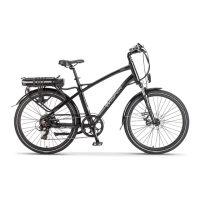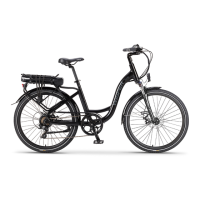Why does my Wisper 905se City Bicycle driving shorter distance per recharge?
- OOscar WoodAug 1, 2025
There are several reasons why your Wisper Bicycle might be driving a shorter distance per recharge: * Your tyre pressure may be too low, so check the pressures. * You may be undercharging the battery, or there could be a fault with the charger. Try recharging the battery completely or have the charger inspected. * The battery capacity may have decreased, or the battery may be damaged, consider replacing the battery. * Hill climbing, frequent stops, strong head winds, or overloading can also reduce the distance. Use power assist and try to avoid throttle only.


